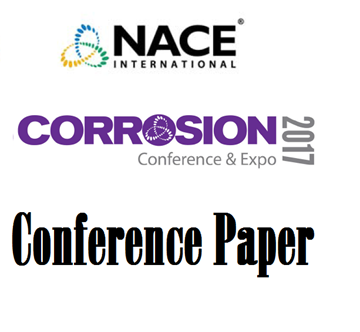Search
NACE Conference Papers
View as
Sort by
Display
per page
Cracking in Aging Austenitic Stainless Steel on Cryogenic Pipeline Application
Product Number:
51319-13205-SG
Publication Date:
2019
$20.00
Creating Decorative Concrete: Materials and Methods
Product Number:
41206-240-SG
Publication Date:
2006
$20.00
Crevice and Pitting Corrosion of Stainless-Steel and Nickel based alloys in Deep Sea Water
Product Number:
51319-13123-SG
Publication Date:
2019
$20.00
Crevice Corrosion of Alloy 625 Strake Bands in Sea Water
Product Number:
51320-14254-SG
Publication Date:
2020
$20.00
Crevice Corrosion of Stainless Steel in Tropical Seas
Product Number:
51317--9327-SG
ISBN:
9327 2017 CP
Publication Date:
2017
$20.00
Crevice Corrosion Performance of High Grade Stainless Steels and Ni-Based Alloys in Natural And Treated Seawater
Product Number:
51316-7196-SG
ISBN:
7196 2016 CP
Publication Date:
2016
$20.00
Crevice Crrosion of Copper as an Engineering Barrier of High-level Radioactive Waste Containers
Product Number:
51317--9162-SG
ISBN:
9162 2017 CP
Publication Date:
2017
$20.00
Critical Factors Affecting the Pitting Corrosion Resistance of Additively Manufactured Ni-based Alloy in Chloride Containing Environments
Product Number:
51317--9345-SG
ISBN:
9345 2017 CP
Publication Date:
2017
$20.00
Critical Review on Sulphide Scale Formation, Removal and Inhibition
Product Number:
51320-14731-SG
Publication Date:
2020
$20.00
Cross-Linking Performance to Mechanism: Correlation of lining performance in flue gas desulfurization applications to cure mechanism
Product Number:
41212-703-SG
Publication Date:
2012
$20.00
Crude Distillation Unit Protection Through Metal Cladding Testing And Implementation With Varied Regional Feed
Product Number:
51321-16876-SG
Publication Date:
2021
$20.00
Cryogenic Spillage Protection (CSP) on FLNG: Improving Safety Through Standardization
Product Number:
51317--8968-SG
ISBN:
8968 2017 CP
Publication Date:
2017
$20.00












